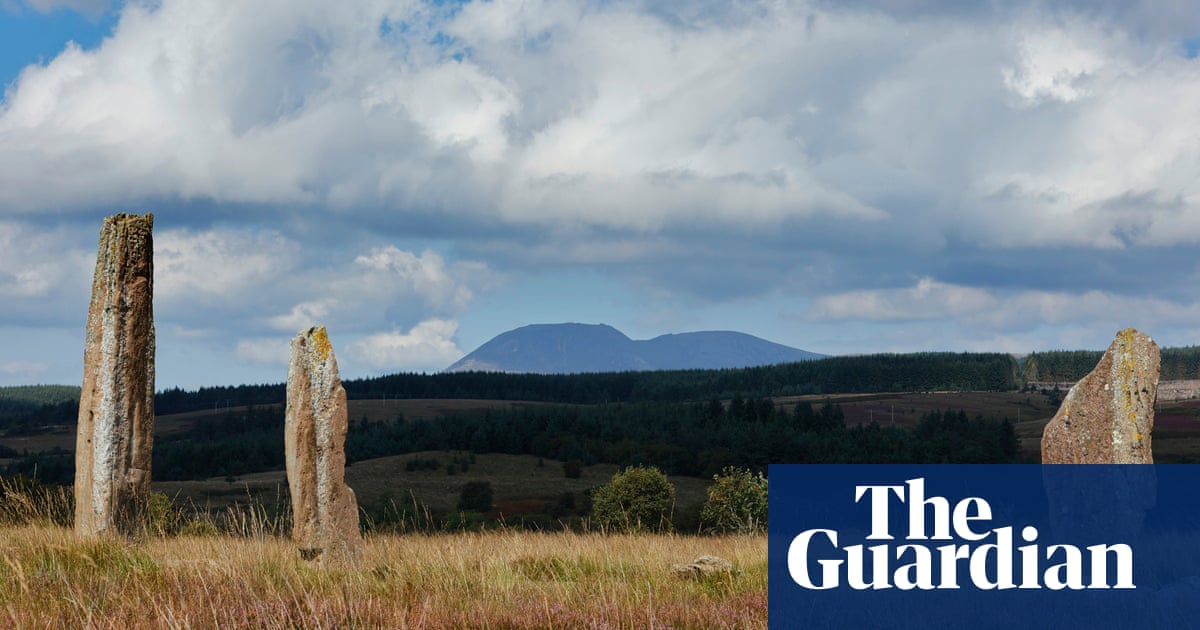Moor
What do we sense on the moor but ghost folk,
ghost deer, even ghost wolf. The path itself is a
phantom, almost erased in ling and yellow tormentil:
flowers of this summer and this summer only,
even as they flourish they’re passing into memory,
already bequeathing themselves —
The moor in summer dreams itself out of all
previous summers. Bog-cotton, the green fritillary,
the fly-catching sundew … likewise the larksong,
all iterated as though for the first time.
It is their first time! And every time before.
We bring the past out of the land and bear the land
into the future, but at heart of all is the land, contested,
exploited and beloved. (The turbines, plantations, the
missile-test sites.) We pass and fade on the face of the
earth, sun-nets drifting over distant hillsides, the cloud
shadows. We become the half-sensed ghosts.
Moor is one of the small number of poems included in Cairn by the Scottish poet and non-fiction writer Kathleen Jamie. Cairn forms the coda to her prose trilogy Findings, Sightlines, Surfacing and consists primarily of “distillations and observations”, short pieces which together form, she suggests, a “cairn of sorts”. They are a shared but personal “trail-marker” for the 62-year-old Jamie, full of joyous observation, but also warning of environmental catastrophe and other forms of destruction happening now, and looming more dangerously ahead.
“Cairn” as a word has an interesting etymology and, as “a heap of stones”, serves a variety of meanings and purposes. It’s an act of communication, which can mark for other travellers a boundary or a burial-place, a water-source or an astronomical viewing-point, to name only a few possibilities. Buddhism considered cairn-building an act of prayer and Jamie’s construction, too, contains a sense of the sacred.
In the small pyramid-shaped title poem of the book, the cairn speaks and adds more metaphorical stones to its identity: “Hawk’s perch. Lover’s tryst. Flowers in a jam jar. / Add one, or scatter us. We are more than the sum of our parts.” The moor similarly exceeds “the sum of its parts” but on a far larger scale. It resists definition: “the path itself is a / phantom”. The poem begins and closes with the presence of “ghost folk” – a congregation that inevitably will one day include “us” – the readers and the writer, who, taking our place in the cycle, “become the half-sensed ghosts”.
Haunted by a summery, softly luminous mistiness, the moor combines, as if by double exposure, the passing of time and the full-lit present moment. The flowers of the “ling and yellow tormentil” are “iterated as though for the first time”. They are also “flowers of this summer, and this summer only”, because these particular flowers, and therefore this particular human moment of their perception, will never reappear: “the moor in summer dreams itself out of / all previous summers.” Both visions are true, as the poem’s pivotal line declares: “It is their first time! And every time before.” The paradox isn’t presented as the head-scratching philosophical mystery some poets I can think of might have favoured, which is no doubt why the effect is thrilling.
Jamie’s expansive, un-insistently melodic stanza provides the ideal frame and canvas for her impressionism. The line itself is an expanding but ever-fading vista, sometimes freeing an indefinite article from its noun (“a / phantom”), sometimes allowing us to pause our walk and rest on a strong, specific noun.
Unexpected line-breaks increase in the last of the two book-end sestets, where Jamie thinks aloud about the misuses of “land” in general. The new landscape, which could also be a future vision of the moor, is submerged by threatening installations “(the turbines, plantations, the / missile-test sites)”. Those “plantations” may possibly, hopefully, suggest an effort at conservation, but the last-listed “missile-test sites” annihilate that hope. Humans, it’s hinted, might manage to demolish themselves before the climate catastrophe is fully played out.
The use of the first-person plural is unusual in contemporary poetry, unless it denotes a small unit – poet and lover, poet and child, etc. The larger “we” that designates “all of us” can sound presumptuous. Jamie avoids this by sustaining her genuinely expansive historical sense, her quiet insistence on speaking for the vaster human timespan. The moor is always seen as a collective possession. That perspective is a reminder that even very good nature-poetry can sometimes seem to celebrate the aesthetics of private ownership.
The assertion that “we bring the past out of the land and bear the land / into the future” suggests harvest and planting as well as the acts of memory, the cairn-making of poetry. The moor, “contested, / exploited and beloved”, is mutable, like us, who are nothing if not impermanent, who “pass and fade on the face of the / earth, sun-nets drifting over distant hillsides, the cloud / shadows.” Facing two ways, the poem is part elegy, part praise song. I felt after reading it as if I’d just been walking over that sunlit ground, as if Jamie had spread the moor under the poem, with the sky arching above it. In Moor we forget art as “artificial” and remember that artful language may be a force of nature.
